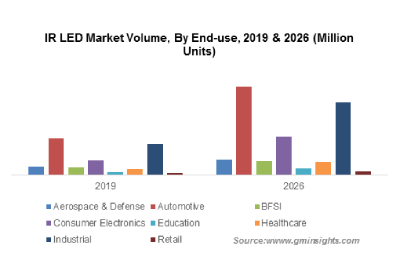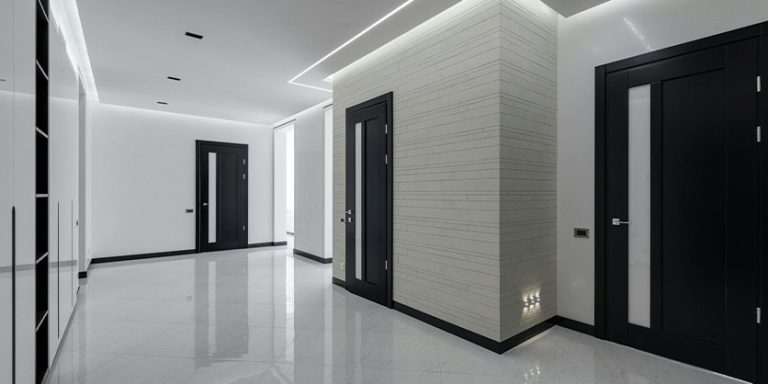Consumers Pull Back on Home Improvement Projects Causing Stagnant Market + Tips on How to Pivot

By Linda Longo
Recently I had the opportunity to sit in on a panel of manufacturers and distributors discussing trends in the home improvement market. It covered multiple product categories, including electrical and lighting.
Due to the nature of the event, I cannot share the names of the participating companies, but they all talked about the big DIY players – most notably Home Depot and Lowes – and of course online sellers, such as Amazon.
What was interesting, however, is the market slowdown that most in the professional lighting and electrical market (you) are facing is also being faced in the consumer business. Individuals are “trading down” on quality in lieu of price. There is work going on, but the market is flat or nominally up. Demand is challenging.
Here are my takeaways from listening to these panelists:
Ask anyone in the home improvement sector how business is going so far in 2024, and the answer is consistent — whether your store sells commodity lighting, moderately priced decorative lighting fixtures or categories such as case goods, sofas, mattresses, and even landscape products and outdoor furniture — business is flat.
Outdoor-related products typically enjoy an uptick in sales early in the year as consumers look forward to summer entertaining, and that was the case in January and February according to the panelists. However, almost as soon as clocks were pushed ahead for Daylight Savings Time in March, that momentum stalled.
Why
According to the U.S. Bureau of Labor Statistics report released last week, employment is up in many industries (i.e. healthcare, leisure and hospitality, scientific, and tech), but so is inflation. In essence, more people are employed, but their earnings don’t go as far as they used to.
Sales in the luxury end of the market have remained steady, but it’s the middle and lower-end customers whose buying behaviors are shifting as they evaluate whether this is the year they upgrade their appliances, lighting fixtures, backyards, kitchens, and baths. The panelists noted a downward shift among middle price point buyers toward lower-priced options, while entry-level customers appear to be holding out for deep discounts or buying out of absolute necessity.
And then there’s this
Another factor has been dragging down purchases: home fatigue. The pandemic years kept people at home and any discretionary dollars went toward home improvement projects since vacation travel, restaurant dining, concerts, and sports events were restricted.
As one manufacturer noted, “With COVID, we had a boom because people were home more and may have pulled the trigger early in making bigger purchases instead of when they normally would have waited to buy.” Therefore, the lull the industry is feeling now might be the result of premature spending in the home improvement cycle.
What happens now
Retailers and manufacturers on the panel agreed the remainder of 2024 will experience a slowdown in discretionary spending. While inflation is causing most of consumers’ buying reluctance, high interest rates also play a part. “Consumers are hanging onto their dollars,” a supplier in the after-market auto parts industry said. “This is especially true for the middle to lower-end customers. We’re seeing them focus on what they can buy with the dollars they have, and they’re not using credit cards as much due to the interest rates.”
The fact that some consumers aren’t buying until a product is discounted is yet another road block to profitability. “Retailers aren’t seeing their costs come down,” a retail panelist shared. “We’re still in an inflationary mode, so we’re seeing consumers pull back in response.”
Addressing the question of whether electricians and other trade professionals are doing a similar form of trading down when making product selection, the panelists had a mixed response. If the project was more higher end, it was noted that electricians didn’t want to risk experiencing more call-backs by choosing a lower-priced option and instead stood by the brands they already know well. If the project was in the multi-family sector, property managers were more interested in cost savings.
Disappearing margins
And then there is the topic of margins. In order to deeply discount merchandise to spur sales, margins get eroded and no one (not the manufacturer nor the retailer) wants to take the hit. Some manufacturers and retailers work out a split (with neither side entirely happy), and others are reportedly forcing distributors to take on more of the loss.
Of course, 2024 being an election year (and a contentious one at that) adds an undercurrent of uncertainty to how consumers are feeling. All expect a sluggish market till then, with none sharing expectations of what happens afterwards depending upon which party is in power.
What’s on the horizon
Home improvement retailers are preparing themselves for flat sales that will extend past the 2024 election and most likely into Q2 2025 — which, of course, is better than being in the red, but hardly a result to look forward to.
“I think homeowners will pull back more than the professionals will due to inflation and interest rates,” noted one manufacturer. As for trade professionals, such as builders and electricians, the frenetic pace of the past several years has tapered off as they have finally caught up on the backlog created by supply chain issues impacting home building. On the flip side, what conquering backlogs looks like to retailers is less ringing at the cash register.
Retailers that can weather the storm will experience steadier sales around mid-2025 — that is, unless manufacturers are forced to raise prices to combat either the tariffs on imported goods from China or other regulatory or supply chain complications.
Digital sellers — most notably Amazon — will continue to take business away from brick and mortars, however, experts expect the percentage to be less than in past years. That said, because of the aggressive pricing online, brick and mortar sellers will be faced with the decision of either price matching so that the local customer doesn’t feel the store’s prices are too high or lose the sale.
With so many customers – from builders and designers to consumers – researching products online before making a purchase, take the time to make certain your website is easy to navigate and provides an informative shopping experience.
In conclusion, retail experts feel the current economic conditions will ease up and improve, but not without ongoing strategic planning and patience over the next 12 months.
Tips on How to Pivot
- If you’re a lighting showroom, unless you’re in a growth market or a high-income market, your business may be flat. You may be seeing customers “trading down” and buying on price. Operating costs may be rising, resulting in margins being squeezed. Other than managing costs, consider modifying your product assortment. Also, identify marketing activities that drive demand by suggesting cost-effective ideas and “impulse buys” that might convince homeowners to make that purchase now.
- If you’re a lighting designer, the key is probably to focus on your key customer niche and promote your value proposition. Your customers are seeking cost-effective solutions to address their issues, and they are either willing to trade down on products that meet their needs or are willing to spend more on those that add value (energy efficiency, controls, aesthetics). Highlight your expertise in providing a balanced solution within their budget.
- If you’re an electrical distributor, don’t expect much growth from the residential market and realize that whatever business is generated will probably be more price-sensitive that in the past. Utilize your website to be disruptive on pricing — even if that means a short-term sale on impulse-type items or perhaps an online only sale.








